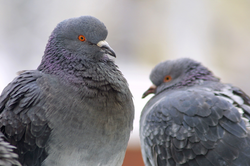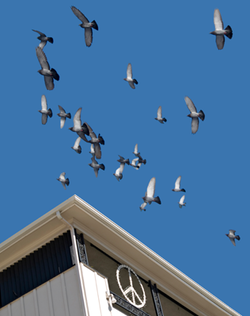by Alex A. Kecskes
Not long ago, feeding pigeons in Trafalgar Square became an offense with violators being fined. In one city, pest birds had learned to associate a school's lunch bell with feeding time and would aggressively pester children for food. The fact is, "
get rid of pigeons" has become the battle cry in many cities, towns and parks throughout the world. Especially as city health officials become increasingly aware of the many diseases carried by pigeon droppings.
The truth is, pigeons can create a number of serious problems. Gathering in flocks on buildings, pigeons can constitute a threat to human health and safety. The mess and droppings left by pigeons can negatively impact the appearance of a business. Often, the sheer weight of bird droppings can lead to structural collapse, particularly ceilings. It can also have a negative impact on a business's workforce. This includes the slip-and-trip hazards bird droppings leave on walkways, steps and entrances. It's no wonder more property owners seek ways to
get rid of pigeons.
Clean-up costs can be prohibitively expensive. Removing nesting materials and accumulated droppings can be difficult, sometimes requiring specialists in "moon suits" to protect them from disease-carrying droppings that are aerated during removal by sand blasters.
Through bird egg removal, birth-control pills and food deprivation, problem pigeons can be driven out of most areas in three to five years. While these methods may be humane, they are too time-consuming to appeal to most property owners and municipalities. Fortunately, there are far more efficient and expedient ways to
get rid of pigeons.


 RSS Feed
RSS Feed